On the Go Tours whisks us off on their Very Vietnam excursion, where the heady delights of this Southeast Asian pearl offer food for the soul and the adventure of a lifetime
By ANDREA PAFITIS-HILL
HANOI
There’s a kind of rhythm to the organised chaos of Hanoi’s streets. Scooters weave their way along, tooting at whatever may find itself in the way. A balancing act that defies the laws of physics, the Hanoi people have mastered the art of piling
themselves, spouses, babies and small children, as well as unfortunate chooks – likely to become the dish of the day – all onto one groaning contraption.
The starting point of our kaleidoscope journey from north to south Vietnam, arriving to the frenetic pace of Hanoi was smoothed and eased by our warm and animated ‘shepherd’, On the Go Tour Guide, Le Van Cuong, a Hanoi local, Vietnam War vet, and proud husband and father. Without his knowledge of the inner workings of not only his home town, but of the whole of Vietnam, we wouldn’t have discovered some of the hidden gems lying off the beaten track.
Hanoi is Vietnam’s capital and home to about seven million people. Largely built up around lakes – Hoan Kiem (Sword Lake) being the most prominent in the centre – the city’s streets are named after the trade that historically existed on them. Fish Street, Paper Street and Silk Street were just a couple we wound our way down during an hour-long cyclo (rickshaw) ride through the city – one of the most memorable experiences of my life, it was as if I was travelling through the city in slow motion while the colourful street life around me was on fast forward. Dotted with reminders of the country’s century of French rule from 1854 to 1954, Hanoi’s architecture and food bear strong stamps of the French legacy in buildings like the grand Hanoi Opera House. Along the boulevards, tall and narrow multistorey homes are stacked together with a patchwork charm – Baroque-style structures capped with sloping pagoda roofs and intricately carved wooden doors are juxtaposed next to clinical new apartment blocks, a stark contrast that runs through many aspects of life in Asia.
Among the French-Vietnamese restaurants in Hanoi is Indochine, one of the city’s oldest eateries. Menu highlights include banana flower salad, fried calamari stuffed with pork and vermicelliwrapped prawns. Cooling down with a daily Hanoi coffee is standard practice: a traditional iced dark roast speciality, it’s made with condensed milk, an ingredient the Vietnamese used during the war, when fresh milk was a luxury.
GOURMET TRAVEL
HALONG BAY
Like an untouched prehistoric world, the karst limestone cliffs and emerald waters of Halong Bay lie in the Quang Ninh province of Vietnam. Mystical and balmy, the bay was named a UNESCO World Heritage Site in 2011. From the deck of our large wooden junk boat, its fan-shaped sails rising high like dragon’s wings, I marvelled at the gargantuan size of the cliffs, to which the roots of trees cling like limpets. Entertainment aboard our luxury cruise featured alfresco massages, a rainbow of cocktails at sunset’s Happy Hour and a tai chi class on the sundeck at dawn. Having never done tai chi before,
I have ruined every future class I may attend. Nothing can come close to the awe-inspiring and spiritual energy that overcame me as I tried to do justice to the graceful movements of this martial art while the sun rose in the eastern sky.
The age-old floating fishing village of Vang Vieng – with a population of just 300 people and no structures built on land – was another highlight of the bay, as was exploring Sung Sot (Surprise Cave), the surprise being a particularly phallic stalactite that glows under a red light inside this huge grotto!
Buffet breakfasts and lunches on the boat included fresh fruit, omelettes made while you wait, pho (pronounced ‘phir’) – a staple Vietnamese beef and rice noodle soup eaten at any time of the day – as well as steamed prawns with coconut, crab with lemon grass and sautéed calamari with celery and satay sauce.
HUE
Quaint and pretty, Hue in the Thua Thien province, sits on the banks of Song Huong (Perfume River), so named for fragrant flowers that fall into it from the orchards upriver. The country’s capital from 1802 to 1945 when the Nguyen Dynasty (the last ruling family of Vietnam) reigned, Hue is located in the narrow ‘waistline’ of central Vietnam. With a population of just 400 000, the city’s wide, tree-lined avenues are a pleasure to stroll or cycle down. Taking in two of the grandest tombs of the emperors inside the citadel and Imperial City – modelled on the Forbidden City in Beijing – gave me a real sense of the reverence the Vietnamese have for the country’s regal past and its ninedragoned royal temples.
With its gentler pace, the nightlife in Hue is more quiet drinks than high jinks! At Y Thao Garden restaurant on Thach Han Street, I tried banh khoai, Hue’sspeciality shrimp and pork-filled pancake served with Hue hoisin dipping sauce. More of a crispy omelette than a pancake, it is folded in half to make it ‘smile’, with fresh lettuce, mint and perilla leaves (also known as shiso, this forms part of the mint family). Other traditional dishes included mixed fig salad and steamed lotus rice.
The striking lotus flower is revered inVietnam as the symbol of a pure heart and mind. The flowers make a beautifully fragrant tea that is not too gentle on the pocket – with 5 000 flowers needed to make just 1kg of tea, it comes at a price of US$200 (about R1 600) per kilo! Lotusleaves and seeds are used in cooking, and the roots in salads.
Hue’s Dong Ba Market is a must-visit. With not as much hustle and bustle as other cities’ markets – but by no means quiet! – I strolled along, discovering bargains like a kilo of fresh mangosteen for 30 000 dong (about R12) and a whole coconut for 25 000 dong (R10).
HOI AN
A five-hour bus journey from Hue along the coastline of the South China Sea took us southwards to the riverside town of Hoi An. Seeing this popular tourist resort for the first time was like arriving on the set of a movie, where every prop and extra was in place for filming the scene of an idyllic Vietnamese country town. Lanterns swayed gently across wide wooden bridges; women in conical non la (bamboo hats) rode around on basketfronted bicycles filled with glistening, freshly caught fish wrapped in paper; deep fuchsia bougainvillea spilled down buttercup yellow houses; and street food vendors stood smiling on every corner.
Named a UNESCO World Heritage Site in 1999 for its treasured historic architecture, the town has maintained its blend of Vietnamese, Chinese, Japanese and French influences. While Hoi An could be labelled a tourist trap, it is a must-visit resort town. Some of the best food I tasted on the trip was at the ever-buzzing eatery and patisserie, Cargo, on Nguyen Thai Hoc Street. Here, I tried my first pomelo salad: a crisp citrus fruit native to Southeast Asia, the pomelo’s pale green or yellow segments are a cross between grapefruit and orange in taste. The Hoi An treasure bags (similar to Chinese money bags) with fish, mushrooms, spring onions and soya chilli dip were a crispy and flavour-packed delight. While cycling out of town to the Tra Que organic herb and vegetable village, we spotted Son restaurant about 2km along the Cua Dai (Main Beach) Road.
Apart from the Robinson Crusoe appeal of the laid-back thatched structure lying right on the Song Do River, the sign outside that read ‘Slow Food For Slow Life’ was definitely worth a stop. Cloudy lemonade with fresh lemon grass, papaya salad, egg rolls and duck in orange were some of the delights to linger over.
HO CHI MINH CITY
Still affectionately known by its former name of Saigon – which I love for its evocative appeal – this is the largest city in Vietnam, with a population of eight million people and five million scooters. The capital of the former Republic of South Vietnam from 1955 to 1975, it’s a metropolis that bears sharp contrasts in its wide French boulevards and sophisticated restaurants, noodle stands and fruit and veg markets, commanding steeples of the Notre Dame Cathedral, hip roadside bars and sweeping heights of elegant international hotels.
As our guide put it, “Hanoi is the ‘New York’ of Vietnam, while Ho Chi Minh City is the ‘Washington’.” A visit to the Cu Chi Tunnels about 35km north-west of Ho Chi Minh City was a sobering and humbling experience. Being a Vietnam War vet, our guide’s normal exuberance was understandably subdued during this trip, where we were given the chance to crawl through 30m of tunnel that has been specially widened for tourists. After our fascinating tour of this historical monument, we tried the simple staple nourishment that once sustained Vietnamese soldiers – la dua tea made from pandan leaves and steamed tapioca, which is very similar in taste and texture to sweet potato.
With Vietnam being the second largest coffee exporter in the world (Brazil is the first), I couldn’t leave without visiting Trung Nguyên, the largest domestic coffee producer in Vietnam. Their shop on Le Duan Street sells a wide selection, including Creative Coffee, Passiona lowcaffeine range, Legendee simulated civet coffee and the real thing – the world’s most expensive coffee – cà phê chôn (also known as kopi luwak), made from civet droppings. With neither the budget nor the bravery to sip on cà phê chôn, I opted for a shot of Trung Nguyên’s flavourful and rich No.8 blend. A visit to Ho Chi Minh City is not complete without eating at An Vien Restaurant, a colonial-style villa on Hai Ba Trung, a small side street. I couldn’t stop gazing around each ‘salon’, rich with lacquered cabinets, heavy silk curtains and Oriental wall paintings. An Vien’s specialities included crab with vermicelli, chicken in fish sauce and caramelised pork in a clay pot.
CAN THO
Also known as Nine Dragon River Delta, the Mekong Delta in south-western Vietnam flows into the sea through nine tributaries in the Can Tho agricultural province. Chugging down the delta on a sampan boat, we made our way through Cai Be floating market where wholesale traders on barges full of fruit and vegetables place leaves on the roofs of their floating ‘stalls’ to let interested rowers-by, the owners of retail stores, know they’re on sale. A stop at Sinh Café, an organic garden and café, introduced us to jackfruit – large, bulbous, bright green and knobbly, we wisely, albeit with a giggle, heeded the large blue sign warning of the 100 000 dong fine (R43) should you be caught picking the fruit. The simple deliciousness of the fresh mango, papaya and star fruit with chilli dipping salt (muoi ot) waiting for us at Sinh Café is unforgettable.
Further down the delta, we stopped at a cottage industry workshop where we watched demonstrations of products like coconut toffee, rice paper and puffed rice being made. Lunch at Le Longanier Indochine Villa & Restaurant was a treat. Nestled down a side alley in the middle of Phu An Village, the restaurant’s elegance was matched by glossy-haired hostesses, all flawlessly attired in the traditional women’s dress, ao dai (a long, fitting silk tunic worn over pants).
Another amazing sight – for quite different reasons! – was the traditional dish of ca tai tuong chien xu (deep-fried elephant ear fish) served whole, and quite delicious once expertly descaled and filleted by our obliging hostess.
Boarding a night-time flight bound for home, I sat in the darkened plane as if still in my cinema seat after watching one of the most memorable movies I’ve ever seen and reluctant to get back to reality.
Foodie facts about Vietnam
- With a balance of five elements, many Vietnamese dishes include five fundamental taste senses: spicy (metal), sour (wood), bitter (fire), salty (water) and sweet (earth), which correspond to five organs: the gall bladder, small intestine, large intestine, stomach and bladder.
- The cooler climate of northern Vietnam limits the production and availability of spices.
- As a result, the foods here are less spicy than those in other regions. Black pepper is used instead of chilli to create the heat of a dish.
- Vietnamese cuisine prides itself on fresh ingredients, minimal use of oil, and raw herbs and vegetables. Achieving the balance between fresh herbs and meats and select spices, Vietnamese food is considered one of the healthiest cuisines worldwide.
- The warm weather and fertile soil of southern Vietnam make for the perfect conditions for a wide variety of fruits, vegetables and livestock. Thus, foods in southern Vietnam are largely vibrant and flavourful, with garlic, ginger, shallots and fresh herbs playing a leading role. The love of sweetness in southern Vietnam can also be seen in the widespread use of coconut milk and sugar.
SOURCES
By ANDREA PAFITIS-HILL

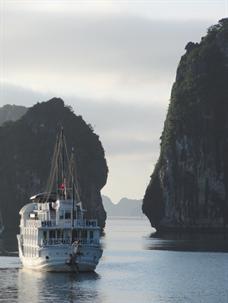
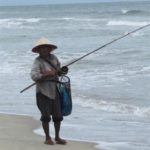
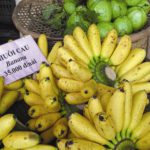
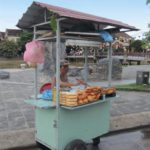
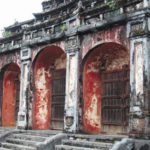
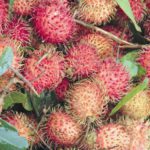
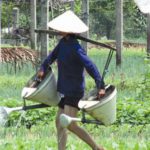
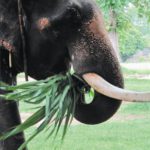
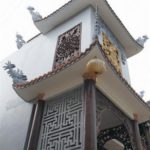
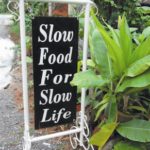
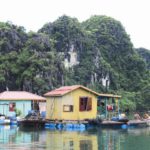
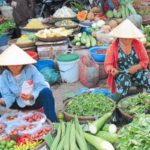
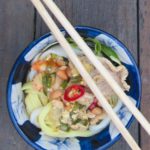
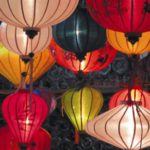
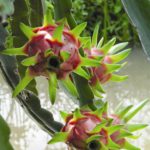
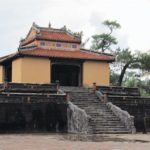
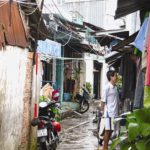
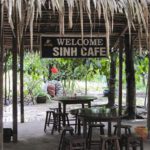
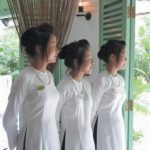
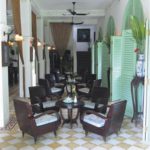
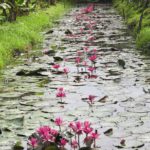
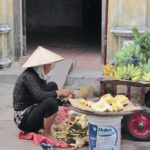
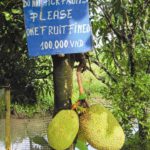
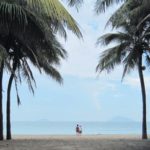






![Chef Hugo Uys’ 5 Best [of New York] Chef Hugo Uys’ 5 Best [of New York]](https://www.foodandhome.co.za/app/uploads/2018/09/Chef-Hugo-Uys-5-Best-150x150.jpg)
